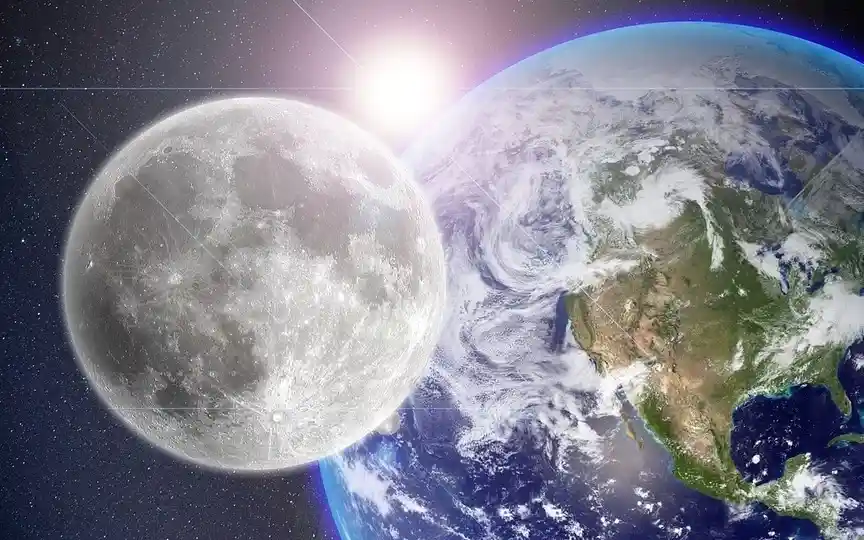Purdue Professor Reveals Ancient Mysteries: Asteroid Bennu Specimens to Illuminate Life’s Beginnings
Samples from the Asteroid Bennu have successfully made their way to Earth, holding the potential to unveil numerous enigmas of the Universe. Professor Michelle Thompson, from Purdue University in Indiana, has achieved an extraordinary accomplishment by spearheading a team that gathered these invaluable samples. Acting as time capsules, these samples provide valuable glimpses into the genesis of our solar system, dating back over four and a half billion years.
In an interview with CBC News: The National, Professor Thompson described the surreal experience of holding pieces of the asteroid Bennu in his gloved hands. He likened it to walking through Roman ruins in Europe, feeling the weight of history and connecting with the ancient past. These carbonaceous and pristine asteroid chunks contain the building blocks of life untouched by Earth’s atmosphere, making them invaluable for understanding the origins of life on our planet, he said.
The headline-grabbing claim that these asteroid samples could unlock the mysteries of early life on Earth is not just hype. Professor Thompson explained that the carbon molecules in these samples are essential to the evolution of life, and studying them could reveal how life could have originated on Earth. The significance of this endeavor lies in the undistorted nature of these materials, with no terrestrial contamination.
As for whether this will only reinforce existing theories or offer new revelations, Professor Thompson expressed his excitement about the future. The limited material collected from Bennu opens a window to many possibilities. The purpose of this mission is to provide unprecedented insights into questions about the origin of life on Earth.
The CBC News interview also covered Professor Thompson’s inspiring journey from a small town in southern Ontario to her current role in planetary science. He attributed his success to the support of mentors and Canada’s tight-knit planetary science community. He encouraged aspiring scientists to not hesitate to seek guidance and mentorship to pave their own paths to realize their dreams.
Professor Thompson strives with enthusiasm and passion to explore new adventures and continue to push the boundaries of our understanding of the cosmos.
NASA’s asteroid sample contains life-critical water and carbon
(AFP Science And Technology) A sample collected from the 4.5-billion-year-old asteroid Bennu is rich in water and carbon, NASA revealed Wednesday, providing further evidence for the theory that life on Earth was seeded from outer space.
The discovery follows a seven-year journey to the distant rock as part of the OSIRIS-REx mission, which dropped its precious payload in the Utah desert last month for careful scientific analysis.
“This is the largest carbon-rich asteroid sample ever returned to Earth,” NASA Administrator Bill Nelson said at a news conference at the Johnson Space Center in Houston, where the first images of the black dust and rocks were revealed.
Carbon accounted for nearly five percent of the sample’s total weight and was present in both organic and mineral forms, while water was locked inside the crystal structure of the clay minerals, he said.
Scientists believe that Earth has oceans, lakes and rivers because it was hit by water-carrying asteroids 4-4.5 billion years ago, making it a habitable planet.
Meanwhile, all life on Earth is based on carbon, which forms bonds with other elements to produce proteins and enzymes and the building blocks of the genetic code, DNA and RNA.
The findings were made through preliminary analysis that included scanning electron microscopy, X-ray computed tomography and more.
“This material is an astrobiologist’s dream,” said researcher Daniel Glavin, adding that there is much work to be done and the sample will be shared with laboratories around the world for further study.
– Largest Asteroid Specimen
OSIRIS-REx was not the first probe to encounter an asteroid and bring back samples for study – Japan succeeded twice, returning celestial dust in 2010 and 2020.
But the amount collected – an estimated 250 grams (half a pound) – dwarfs that of the Japanese mission return, with Hayabusa2 managing just 5.4 grams.
Named after an ancient Egyptian deity, Bennu is an “ancient object preserved in the vacuum of space,” according to NASA, making it an attractive target for research.
Its orbit, which intersects our planet, also made the trip easier than a trip to the asteroid belt, which lies between Mars and Jupiter.
Beyond scientific insights, a better understanding of Bennu’s composition may prove useful if humanity ever needs to steer it away.
While there is no danger of it hitting Earth in the mid-2100s, the odds increase to about 1 in 1,750 between then and 2300, NASA says.
Data collected by the OSIRIS-REx spacecraft revealed that the particles that make up Bennu’s outer surface were so loosely packed that if a human stepped on the surface, they could sink, much like a pit of plastic balls in children’s playgrounds.
-Future studies-
So far, the researchers have not focused their efforts on the main sample itself, but on the “bonus particles” located on top of the sample collection mechanism.
The rest of the sample will be checked later.
Back in October 2020, when the OSIRIS-REx probe was shooting nitrogen gas at Bennu to collect material, the flap intended to close the sample wedged open, allowing some of the material to leak out into another compartment.
“The best ‘problem’ is that there is so much material that it is taking longer to collect than we expected,” said OSIRIS-REX Associate Curator Christopher Snead in a statement.
NASA says it will preserve at least 70 percent of the Houston sample for future research — a practice first started in the Apollo era with lunar rocks.
“The samples will then be available for new questions, new techniques and new instrumentation well into the future,” said Eileen Stansbery, director of the Astromaterials Research Division at the Johnson Space Center.
Additional pieces will be sent for public display at the Smithsonian Institution, the Houston Space Center, and the University of Arizona.




